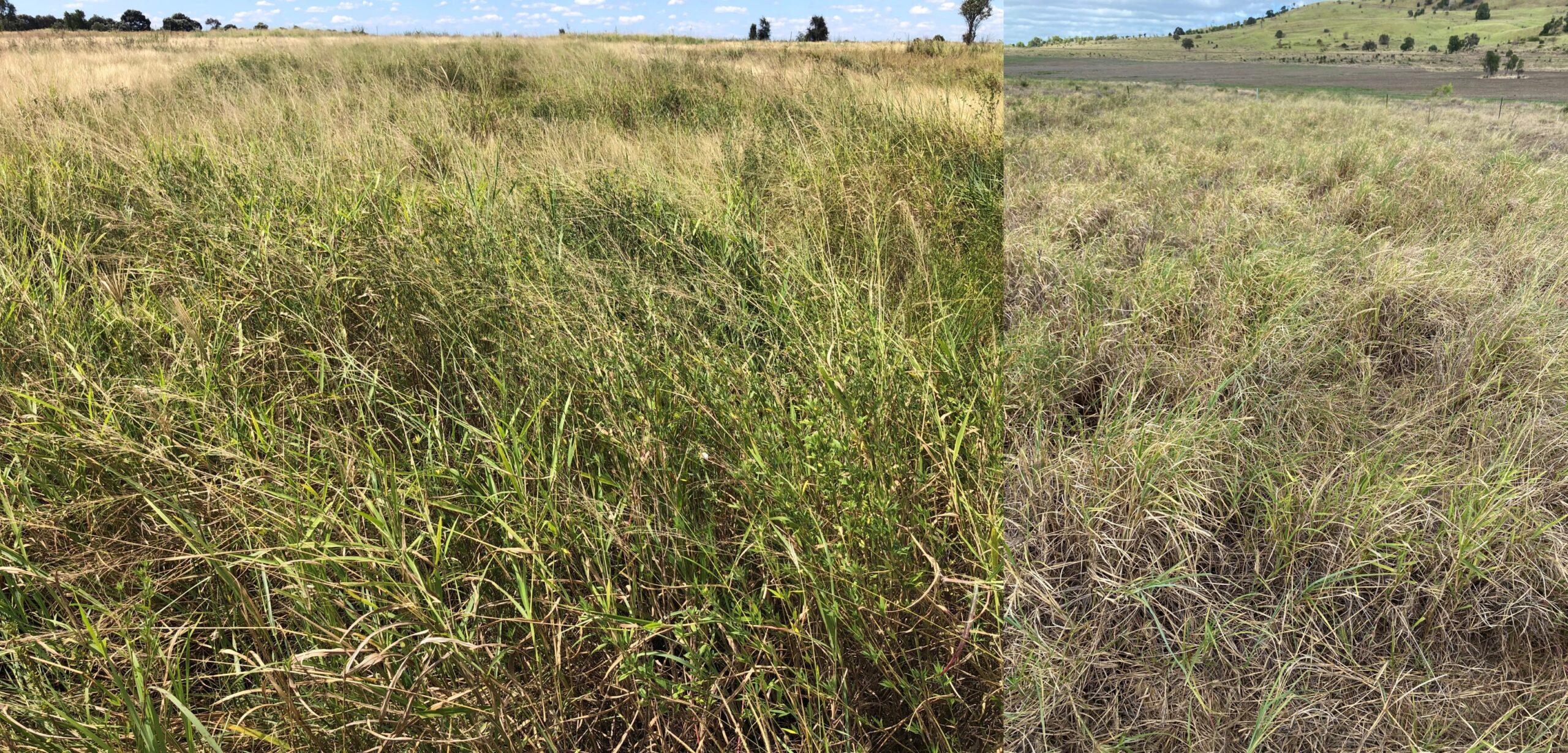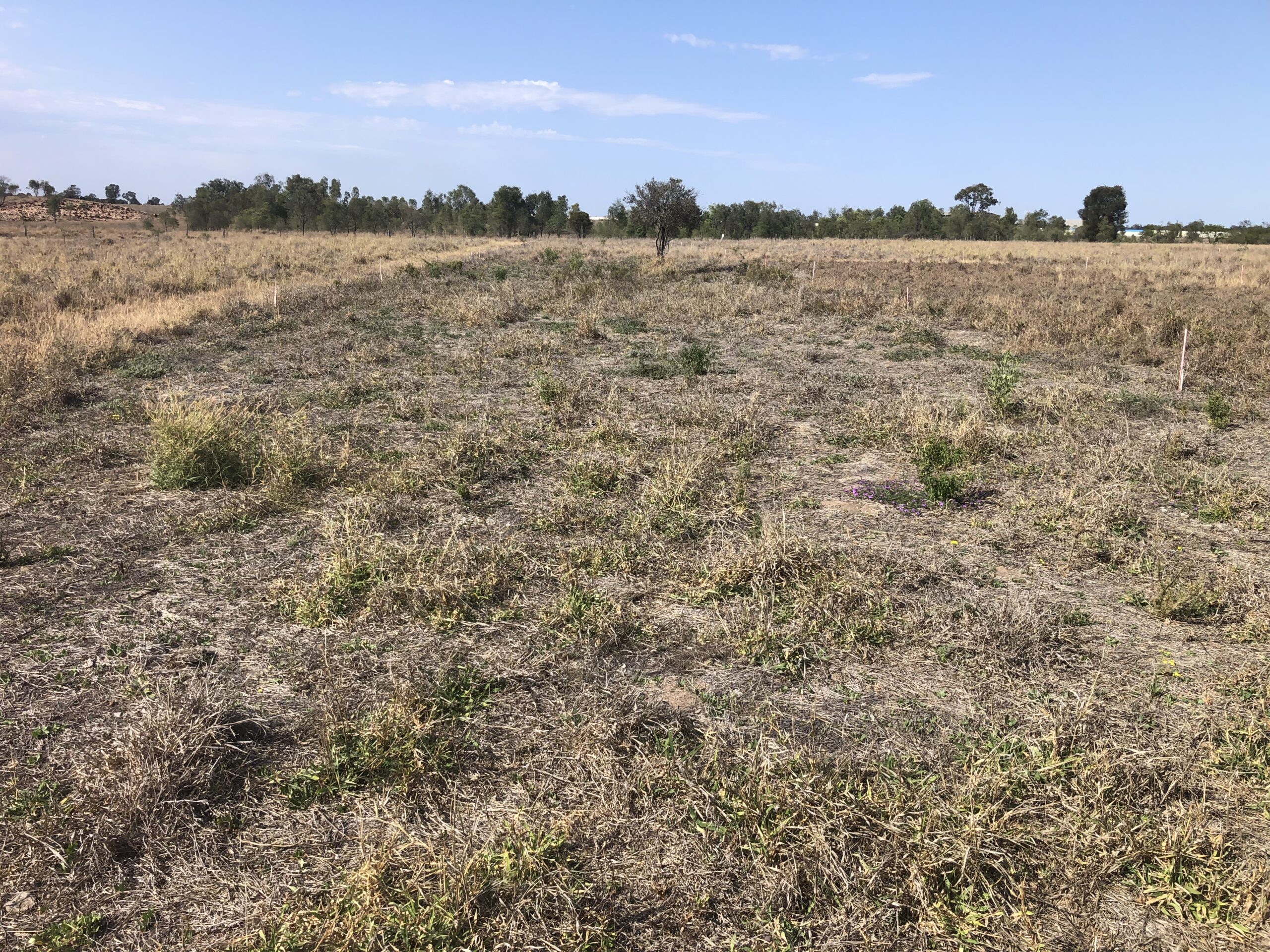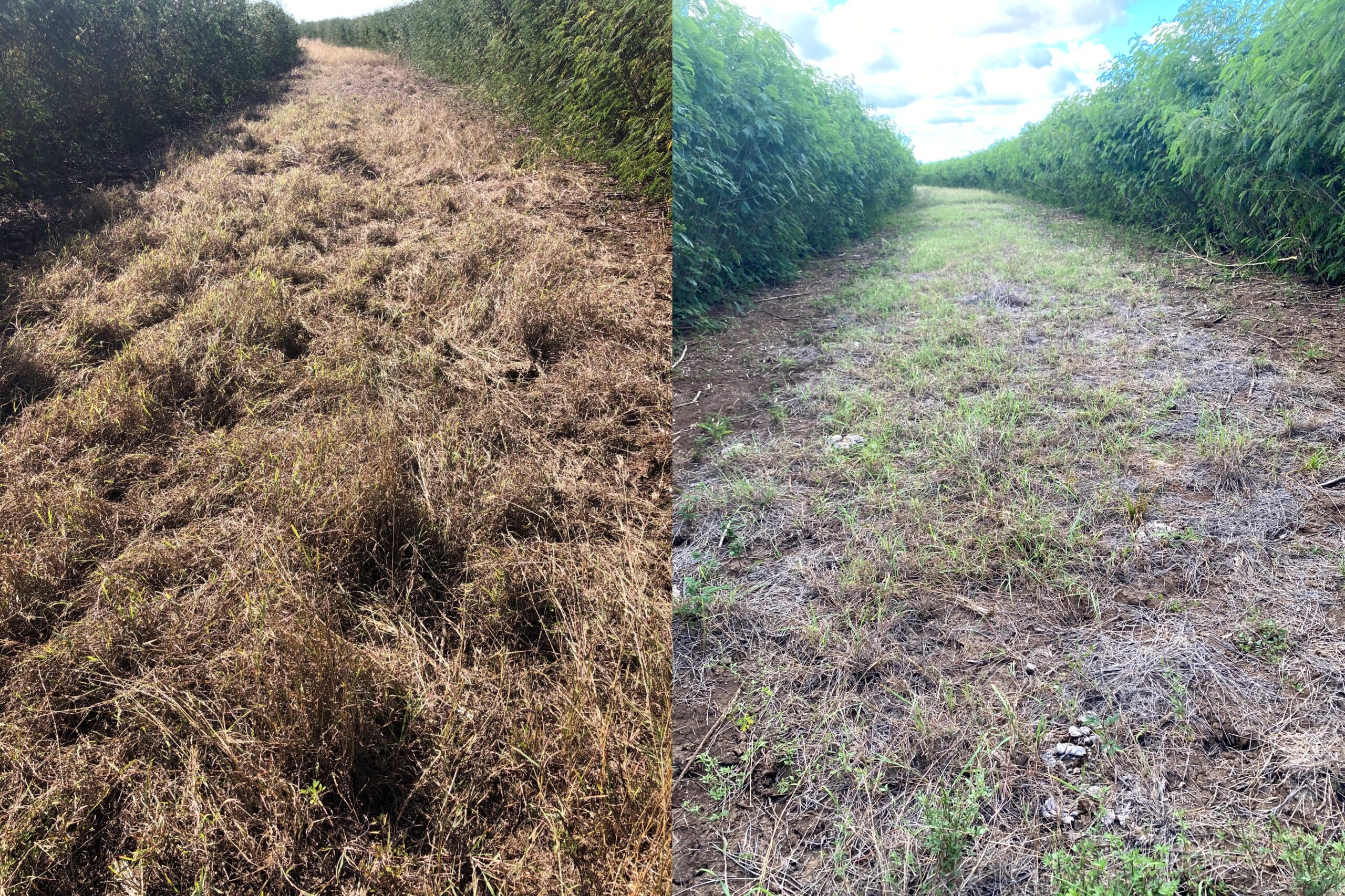Recent learnings from CQ pasture dieback research sites
Pasture dieback is a sporadic condition that can come and go within a season, or over multiple seasons. Trials that run for several years have been important to understand the long-term impact of treatments when addressing pasture dieback.
Management options for pasture dieback
Since 2018, the CQ and SQ Pasture Resilience Teams have established multiple research trials to investigate management options to restore productivity from pasture dieback. The overall findings generated from these sites have been summarised in the Management of Pasture Dieback factsheet and the guide on how to select grass varieties tolerant to pasture dieback. This article focusses the key outcomes from data collected from these trials specifically over the last two summer periods.
Long-term pasture dieback trial sites
There are eight pasture dieback trial sites located across central and southern Queensland. All sites have different paddock histories, soil and pasture types, but all were severely affected by pasture dieback. Treatments at these sites were developed in consultation with the host producer and knowledge of pasture dieback at the time.
| Nearest town | Trial situation | Summary of treatments |
| Middlemount | On-farm | Treat existing pasture; re-seed grass/legume mix |
| Banana | On-farm | Re-seed single grass species between leucaena rows |
| Moura | On-farm | Re-seed grass and legumes in combinations |
| Biloela | On-farm | Re-seed grass only and grass/legume mixtures |
| Gayndah | Brian Pastures research facility | 3 trials - Treat existing pasture; re-seed grass after forages or fallow; re-seed single grass and legume species |
| Boonah | On-farm | Multiple grass species tolerance to pasture mealybug |
Outcomes from the 2022/23 and 2023/24 summers
Tolerant grasses have consistently performed under dieback conditions
Trial results over the last two years reinforce the understanding of which grasses have higher tolerance to pasture mealybug, and hence dieback. Grasses ranked as tolerant or moderately tolerant in the grass tolerance species guide, such as Mekong briz antha, Biloela buffel, Gatton panic and setaria, have performed very well either planted as single species or in pasture mixtures. Grasses in the category of low tolerance also performed better than grasses with moderate or high susceptibility ratings. These findings should increase grazier’s confidence that new pastures sown to higher tolerance grasses will perform and are therefore worth the effort to sow into paddocks affected by pasture dieback.
Sowing multiple grass species is effective to restore productivity, but only if the species are tolerant to pasture dieback
Treatments that include multiple species of grasses (with or without legumes) have recorded high biomass yields over the last 2 years in multiple trials. In all cases species with high or moderate tolerance to pasture dieback were selected for sowing. These treatments have performed well because the grasses are tolerant, not simply because multiple species have been chosen. These same species are also demonstrating a higher tolerance to pasture dieback when sown on their own.

Not all susceptible grasses succumb to pasture dieback every year
While sabi grass, Bisset creeping bluegrass and Gayndah buffel are considered highly susceptible, there has been contrasting responses in trials at two close-by locations.
At the Moura site in the 2022/23 summer, sabi grass almost completely died due to pasture dieback, whilst Gayndah buffel was also affected but did not die. Bisset creeping bluegrass at this trial was unaffected. Subsequently during summer 2023/24, sabi grass fully recovered and Bisset creeping bluegrass remained healthy. In contrast, at the Banana trial site which is located less than 30km away, Bisset creeping bluegrass died from pasture dieback during summer 2022/23. Over the 2023/24 summer period Bisset has continued to struggle under high mealybug numbers, as has Indian couch (which is closely related) in the control plots. No other grass species, including Gayndah buffel which is also considered highly susceptible, has been affected by dieback at this site to date.


These sites are generating valuable long-term data on grass species tolerance across different situations and geographical locations. While pastures affected by pasture dieback can regenerate naturally from the soil-seedbank, research trials are demonstrating substantial biomass yield improvements when a new pasture is sown with tolerant grasses and resistant legumes.
For more information on pasture dieback including factsheets, guides, videos, podcasts, webinars and conference papers, visit our pasture dieback page.
Pasture dieback research is continuing under the Queensland Pasture Resilience Program, a partnership between DAF, Meat & Livestock Australia (MLA) and the Australian Government through the MLA Donor Company.